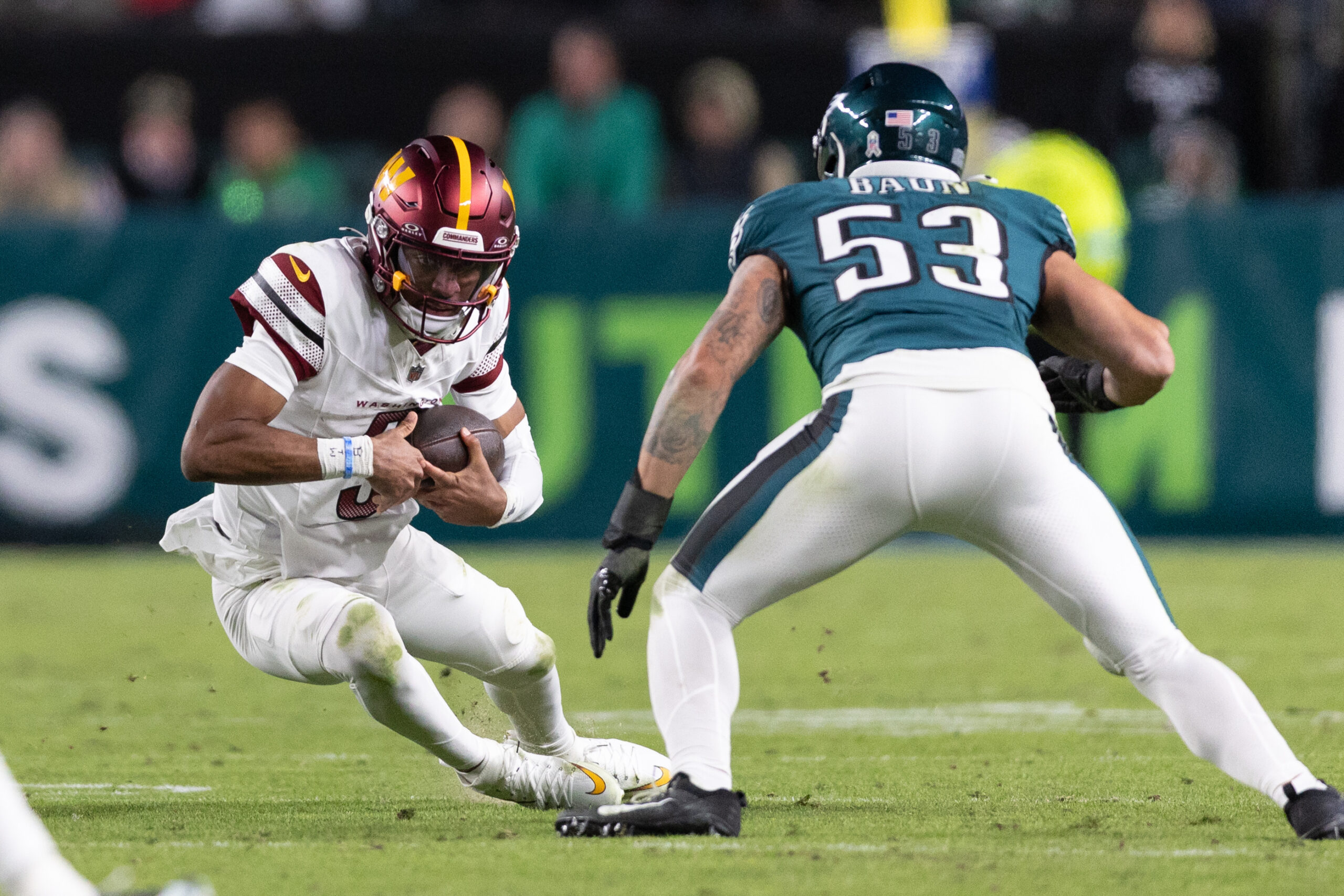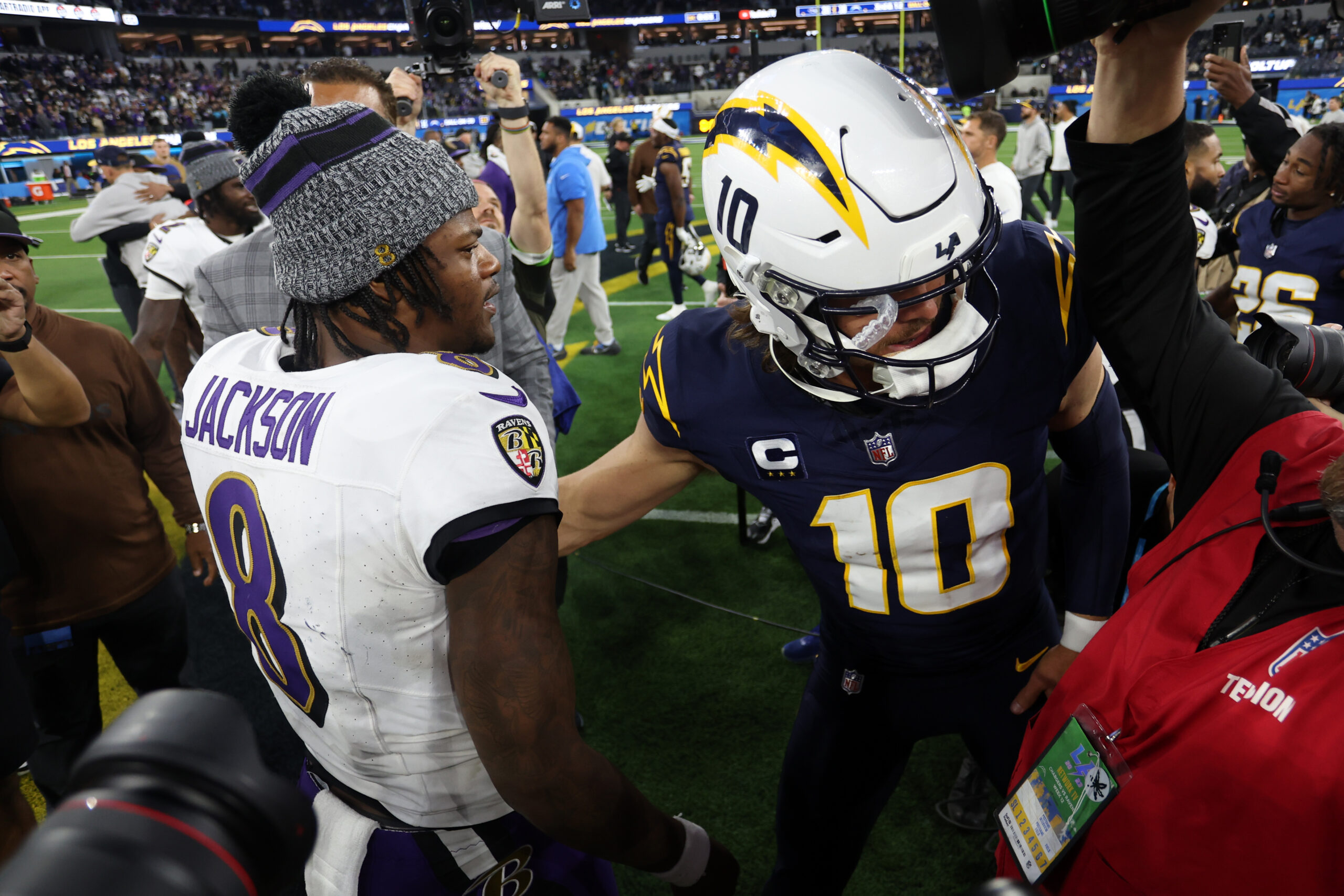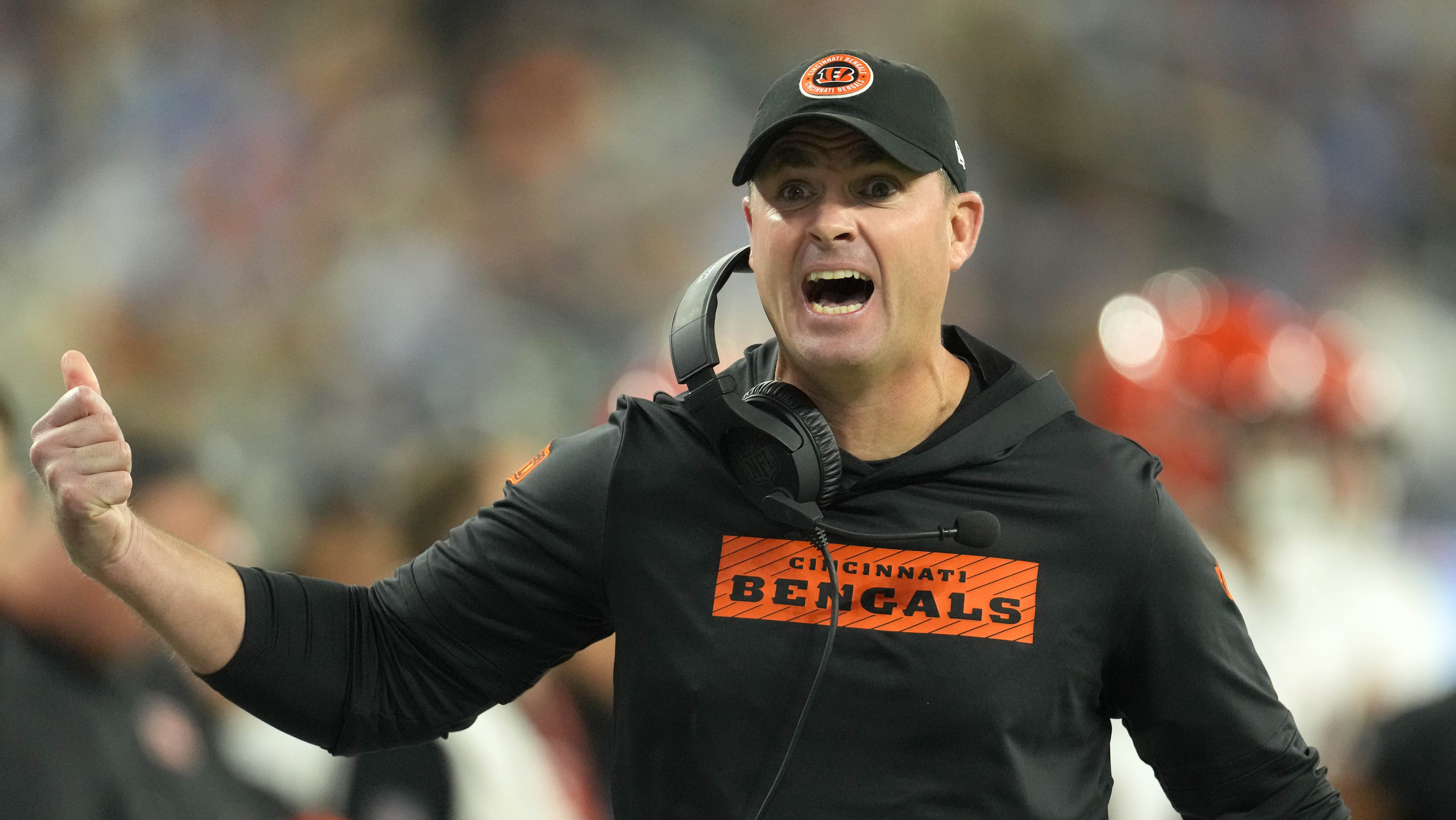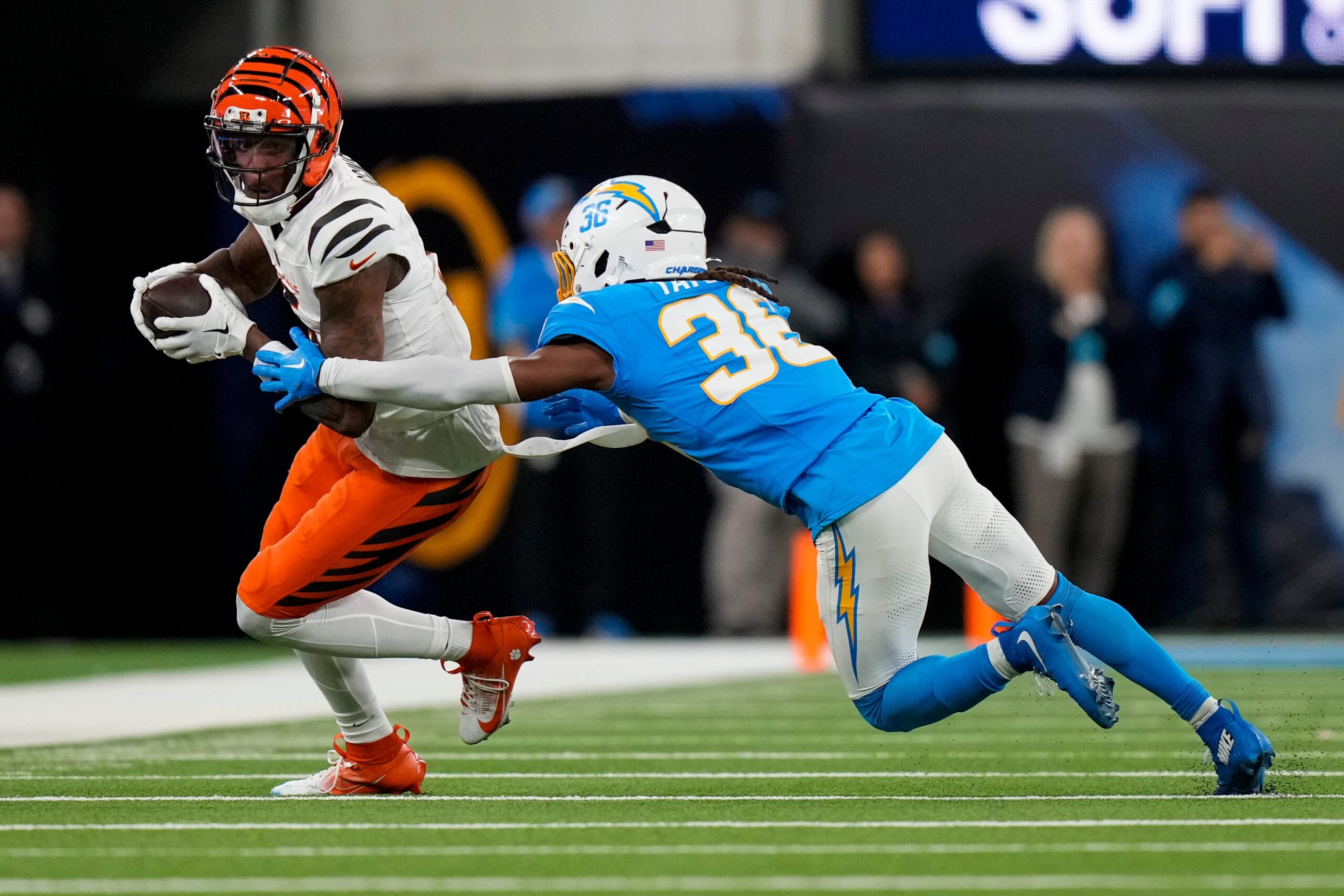NFL Analysis
5/13/24
10 min read
NFL Rookies in Best Position for Immediate Success in 2024

The goal for every draft pick is to make a long-lasting impact on the field. That does not always happen immediately. Only a select handful of rookies make an immediate impact. For this to happen, the player needs the right fit and opportunity.
There are a few rookies in position to make that immediate impact. In this exercise, we’ll spread out the positions to not be repetitive and list nine wide receivers.
Later in the week, we’ll get to some of the most fun fits from the draft, players who could bring the most future excitement but might not leap into a big role from the jump.
NFL Rookies In Position to Make Immediate Impact
Caleb Williams, QB, Chicago Bears (first overall) 
It’s not groundbreaking to suggest the first overall pick is going to make an immediate impact, but it could be hard to overstate the effect Caleb Williams can have on the Chicago Bears offense right away. The Bears aren’t wasting any time with “make him earn it” type games other teams have played with an incoming rookie quarterback. Instead, they already named Williams the Week 1 starter.
Williams on his own is worth the excitement, because his play style should fit well with what offensive Shane Waldron could build around him. But it’s also the supporting cast that could make the transition to the NFL much easier for the rookie. DJ Moore, Keenan Allen and Rome Odunze might be the best receiving trio a No. 1 pick has gotten to work with in Year 1.
Surrounding talent typically derails rookie seasons from high draft picks. But the Bears did not earn the first overall pick by being the league’s worst team (they have the Carolina Panthers to thank for that), and the franchise made a concentrated effort to add receiving talent to help out the quarterback.
Williams has the arm strength, accuracy and athleticism to make the off-platform and out-of-structure plays a staple of his game, but he’s also much better in structure than often given credit for. The current setup in Chicago will give Williams the opportunity to win inside of structure. He’ll also have less of a need to carry the weight of the offense on his shoulders like he did with USC last season.
While we shouldn’t expect an All-Pro season as a rookie, it’s clear this is a situation where some of the normal pitfalls for a top pick at quarterback can be avoided.

Malik Nabers, WR, New York Giants (sixth overall) 
During his podium availability at the combine, Malik Nabers made it clear what the New York Giants thought of him.
"I know they're looking for that WR1, especially after Odell left. If I can come in and be that guy, so be it."
— Giants Videos (@SNYGiants) March 1, 2024
Malik Nabers adds Brian Daboll "really likes" him when asked about potentially being drafted by the Giants: pic.twitter.com/isdO6CvdYT
An Odell Beckham Jr. replacement would be great, but the Giants just need a receiver who can be the top target and explosive option in a passing game. Despite the team trying multiple avenues to get there, the answer has been Darius Slayton year after year. Nabers should be the top option in this passing game.
Nabers gives the Giants the type of receiver who, like peak-Beckham, can create a big play from anywhere on the field. He can take a slant to the house or use his speed to win deep down the field.
Nabers can fit whichever version of the Giants offense they want to run. When Brian Daboll got the most out of Daniel Jones during the 2022 run to the playoffs, it was an offense designed around getting the quarterback out of the pocket and creating yards after the catch on the shortest throws in the league, on average. Nabers can eat up space as he averaged 7.0 yards after the catch per reception last season, per SIS, and his 0.35 broken tackles per reception were the second-most in this draft class.
If the Giants want to go back to a more traditional offense, say if Drew Lock becomes the starter, Nabers has the downfield acumen to be a top-tier deep threat to go along with Slayton and Jalin Hyatt.
Nabers spent half of his snaps in the slot last season, which continues a trend of the Giants loading up on slot-first players. However, Nabers’ 78th-percentile success rate against press coverage, per Reception Perception, makes a good case that he can live — and thrive — on the outside.

Jared Verse, EDGE, Los Angeles Rams (19th overall) 
While Aaron Donald took all the attention in the pass rush, the Los Angeles Rams set up their other linemen in advantageous matchups. Throughout Donald’s career, he opened up rushing lanes and sparked career-bests, career resurgences or young breakouts for the players around him. Last season, rookies Byron Young and Kobie Turner got that benefit.
Jared Verse won’t get that boost, but he slides into a defensive line that needs more of a presence on the outside. In 2023, the Rams’ No. 2 pass rusher was 310-pound Michael Hoecht, who was often asked to fulfill the outside edge duties in this defense such as dropping into coverage. Hoecht was respectable enough in that spot, but it was not an ideal fit for what the Rams needed.
Verse will slide into that edge role opposite Byron Young. That will give him plenty of chances to get to the quarterback. Young was 29th among all defenders in pass rush snaps as a rookie. Hoecht was 90th. It wouldn’t be a surprise to see Verse get more run snaps than Hoecht did last season. He has a quick first step that he uses to win on obvious passing downs, but he also has enough hand usage to win with technique.
While Verse’s pressure numbers and sacks dipped in 2023, his pressure rate was 11 percent higher than expected, per SIS, which was the second-best figure in this class. He accounted for 21 percent of Florida State’s pressures overall.
Verse won’t have to carry the Rams defensive line as he joins a young and promising line, but he’ll get plenty of chances to make his presence felt.
Terrion Arnold, CB, Detroit Lions (24th overall) 
Ennis Rakestraw Jr., CB, (61st overall)
In an attempt to improve the pass defense last offseason, the Detroit Lions tried to reshape the secondary with veterans. Detroit took shots on some one-year deals hoping a volume approach would find an answer at cornerback. It worked for a bit. The Lions were a top pass defense for the first half of the season (sixth in DVOA through Week 9), but injuries and consistency forced them to fall off over the second half (25th in DVOA from Week 10 on).
The best bet the Lions made was the second-round choice of Brian Branch, who thrived in the slot. Detroit then doubled down on bringing in more young defensive backs to fill in the gaps from the turnover at the position. Carlton Davis was acquired in a trade to play as one outside corner with the duo of Terrion Arnold and Ennis Rakestraw Jr. filling out the secondary.
Arnold and Rakestraw have the versatility to play outside and in the slot with experience playing press and man coverage.
Arnold and Rakestraw have the versatility to play outside and in the slot with experience playing press and man coverage. Detroit has lowered its rate of man coverage during Aaron Glenn’s run as defensive coordinator, but it’s still around the top 10 playing man about 25 percent of the time.
Per SIS, Arnold played man on 32 percent of his snaps and pressed on 22 percent, while Rakestraw played man 27 percent and pressured on 26 percent. Those figures were among the highest among drafted corners.
Arnold should start on the outside opposite Davis, and he could be a plus No. 2 after his final season at Alabama. Arnold allowed 38 percent of targets to be completed against him and held opponents below a 35 percent success rate in both man and zone coverage.
Rakestraw could serve as a movable piece that spells Branch in the slot and allows the second-year defender to move around more when necessary. It might also spark new defensive looks from the Lions who had the second-lowest rate of dime defense last season — just 0.1 percent. A defense that features Davis, Arnold, Rakestraw, Branch, Obi Melifonwu and Kerby Joseph on the field at the same time could be devastating for opposing passing offenses.

Javon Bullard, S, Green Bay Packers (58th overall) 
The Green Bay Packers needed help at safety after a 2023 season that saw production at the position decline. In an otherwise dead safety market, Green Bay made sure to grab the best young impact safety and sign him to a multi-year deal, giving Xavier McKinney four years and $67 million.
Green Bay wasn’t done there as it added Javon Bullard in the second round. Like McKinney, Bullard can play all over the field, and that versatility will open up the defensive looks the Packers can deploy under new defensive coordinator Jeff Hafley.
At Boston College, Hafley favored more single-high coverages but has noted the importance of two-high shells. The Packers could use the interchangeability of both safeties to play around with the pre-snap look and change it post-snap.
Wherever he (Bullard) lines up, he can make a play.
Bullard was almost exclusively a deep safety in 2023 with Georgia but spent 81 percent of his snaps in the slot during the 2022 season. With a Bullard-McKinney pairing, the Packers have a safety duo that can manage different alignments. They can play in two-high, each can serve as the single-high safety, and both can move down to the slot.
When Bullard played closer to the line in 2022 before his move to safety, he put up eight tackles for loss. When he moved back to safety full-time for the 2023 season, he forced 10 pass breakups, per SIS. Wherever he lines up, he can make a play.
In his post-draft press conference, Bullard said he knows he can play all positions in the secondary if needed. That range should give him the edge to be the Week 1 starter opposite McKinney at a position of need and one that completely turned over from last season in Green Bay.








